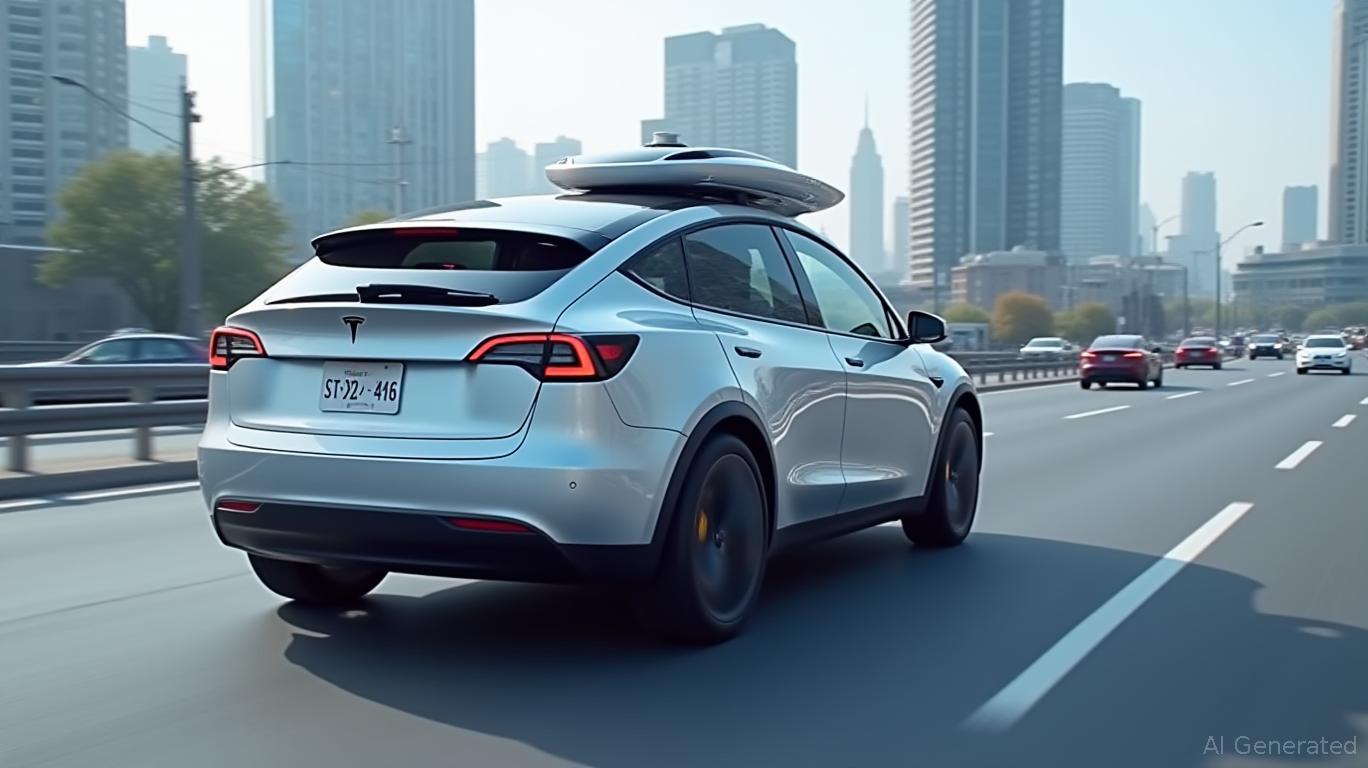Tesla's Robotaxi Delay to June 22: A Crossroads for Autonomous Tech and EV Valuations
Tesla's decision to push its Robotaxi launch to June 22, 2025—nearly a decade after Elon Musk first promised a “million robotaxis by 2020”—spotlights the precarious balancing act of autonomous vehicle (AV) innovation. While the delay reflects unresolved technical and regulatory hurdles, it also underscores a broader question: Can Tesla's vision of a driverless future justify its EV market dominance and sky-high valuation? For investors, the answer hinges on whether the company can navigate these challenges without eroding confidence in its autonomous ambitions.

Technical Challenges: The FSD's Unproven Edge
Tesla's Full Self-Driving (FSD) system, now at Version 13, remains its crown jewel—and its Achilles' heel. Unlike competitors like Waymo, which use lidar for 3D environmental mapping,
relies solely on cameras, a cost-effective but unproven approach in complex urban environments. While Musk claims the FSD is “10x safer than human drivers,” Tesla has not disclosed detailed safety data to regulators. For instance, the company's average of 10,000 miles between interventions—a metric Musk cited—lacks transparency about how this figure was derived.The absence of such data contrasts sharply with Waymo, which has shared granular disengagement reports and now serves 250,000 weekly rides in Arizona. Meanwhile, Tesla's delayed Cybercab—its dedicated autonomous vehicle, lacking steering wheels and pedals—has been pushed to 2026. The current Austin rollout uses modified Model Ys, signaling unresolved technical barriers to scaling a purpose-built fleet.
Regulatory Tightrope: Texas as a Testing Ground, Not a Panacea
Tesla's choice of Austin, Texas, as its launchpad is no accident. Texas requires no special permits for autonomous vehicles, unlike California, which demands rigorous testing disclosures and safety certifications. This regulatory leniency allows Tesla to deploy its fleet without public transparency—a stance that has drawn criticism from safety advocates. However, scaling beyond Texas will require navigating stricter state and federal rules.
The Texas Attorney General's pending ruling on whether Tesla must share trial data adds further uncertainty. A ruling against Tesla could force operational overhauls, while a win might embolden the company to expand geographically. Federal regulators, meanwhile, are focused on maintaining U.S. leadership in AI, but Musk's public disputes—such as his feud with Donald Trump—risk political blowback that could indirectly affect oversight.
Operational Realities: Scaling from 10 to 1,000 Cars
The June 22 rollout will begin with just 10–20 Model Y vehicles, remotely supervised by Tesla employees—a far cry from Musk's 2020 vision. Analysts like Morningstar's Seth Goldstein question whether Tesla can profitably scale to 1,000 vehicles later this year, given the costs of human oversight and vehicle modifications.
Competitors like Waymo have already proven that autonomous rides can generate revenue, but Tesla faces an uphill battle. Its core EV sales fell 13% in Q1 2025, squeezing cash reserves needed to fund autonomous development. Investors will demand tangible proof of safety and scalability before endorsing Musk's timeline for $1 trillion in autonomous revenue by 2030.
Market Sentiment: Valuation at a Crossroads
Tesla's $500 billion valuation is predicated on autonomous success. Bulls argue its software edge and EV scale position it to dominate a $10 trillion mobility market. Bears, however, point to execution risks: Tesla's stock trades at a forward price-to-sales ratio of 10.02, double its historical average, despite missing prior autonomous deadlines.
Investor skepticism is reflected in Tesla's underperformance versus broader markets in 2025. While the S&P 500 rose 8%, Tesla's stock dropped 12%, with short interest climbing to $20 billion. Musk's political entanglements and Tesla's reliance on a single software stack—unlike Waymo's modular approach—exacerbate concerns about single points of failure.
Investment Implications: Proceed with Caution
For investors, the June 22 launch is a critical inflection point. Success could validate Tesla's autonomous roadmap and buoy its valuation, while further delays could trigger a reevaluation of its EV moat. Key watchpoints include:
- Safety Data Transparency: Will Tesla release disengagement reports or third-party audits?
- Cybercab Readiness: Can Tesla finalize production by 2026, or will hardware delays persist?
- Regulatory Expansion: Can Tesla secure permits in California and beyond?
Recommendation: Hold Tesla stock only if investors are comfortable with high execution risk. Short positions may be warranted if the June rollout underwhelms. Meanwhile, competitors like Waymo (via Alphabet) and Baidu's Apollo Go present safer bets on proven autonomous revenue streams.
Conclusion
Tesla's delayed Robotaxi launch is more than a technical setback—it's a referendum on its ability to redefine mobility. The June 22 rollout will test whether Musk's vision can overcome the cold realities of software complexity, regulatory scrutiny, and market skepticism. For now, the EV sector's valuation hierarchy remains in flux, with Tesla's fate hanging on the fine line between innovation and overpromise.

Comments
No comments yet